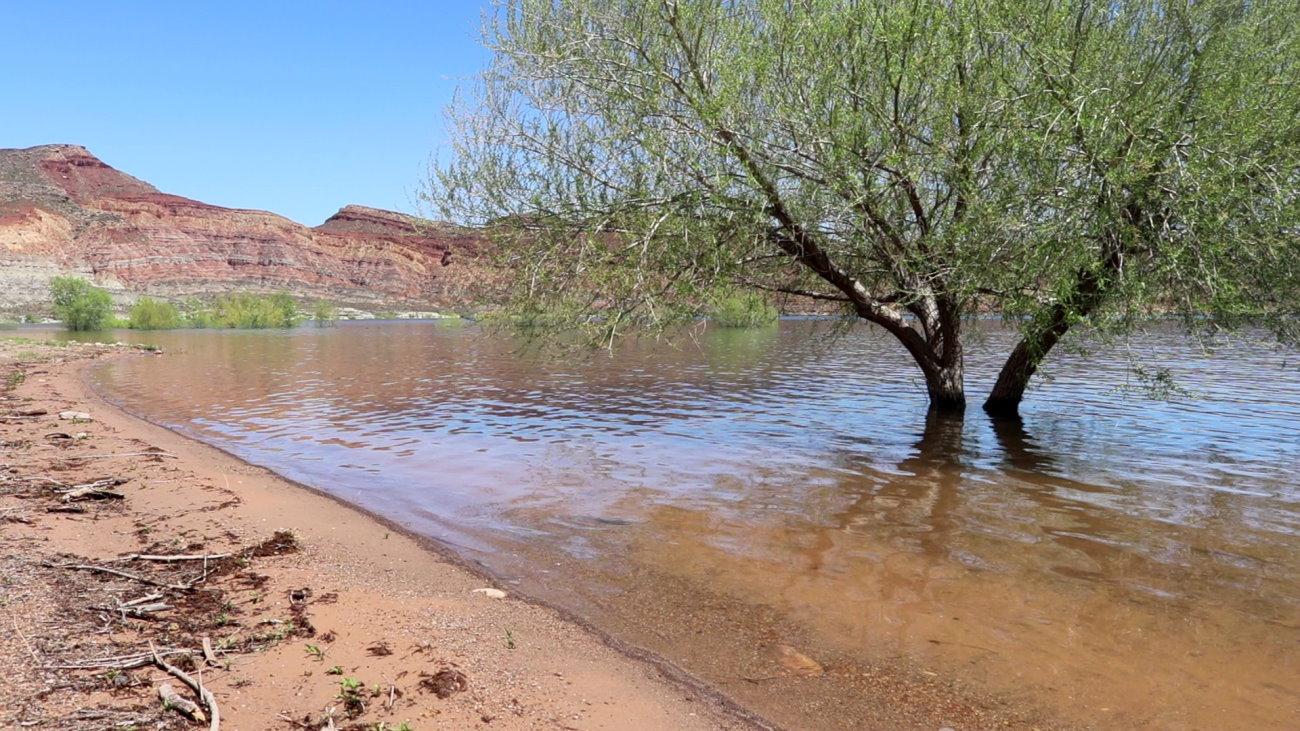ST. GEORGE — State water officials announced earlier this week that changes to the Lake Powell Pipeline project will shave $100 million off the overall cost and streamline the federal permitting process.

The changes eliminate two planned water reservoirs that would have generated hydropower at peak demand times. According to a press release from the Utah Division of Water Resources issued Wednesday, the removal of the reservoirs also helps reduce the pipeline’s environmental impact.
Though the reservoirs are being removed, the pipeline will still possess a series of inline hydroelectric facilities. Initially, due to the inclusion of the power-generation facilities, the Federal Energy Regulatory Commission, or FERC, was overseeing the licensing of the project.
However, FERC suggested Utah water officials consider using the hydropower conduit exemption expanded by Congress in 2018. This eliminates the commission’s license requirement for the pipeline, given each of the project’s inline facilities will produce less than 40 megawatts of power.
“The primary purpose of the (Lake Powell Pipeline) is to diversify and increase the water supply for 13 communities in southwestern Utah. Focusing on the water delivery portion of the project streamlines the permitting process and helps move the project forward as efficiently as possible,” Eric Millis, director of the Utah Division of Water Resources, said in Wednesday’s press release.

Washington County Water Conservancy District General Manager Ron Thompson called the decision to go with FERC’s suggestion a “no-brainer.”
“Certainly, with what Congress has done and the jurisdictional decision FERC had made, this is a no-brainer for the project,” Thompson said. “It’s going to make it move faster. … We no longer need a permit for the inline (hydropower plants), so those can be built as we need them, so it makes the process simpler and more straightforward.”
Having withdrawn the licensing application to FERC, Utah water officials are now petitioning the U.S. Department of the Interior directly to oversee completion of an associated environmental impact statement and permitting process.
With the decision-making on the federal level being handled by one department instead of multiple ones, Thompson said he believes the pipeline project will be simplified and expedited.

“Now that doesn’t mean we’re starting the process over,” he said. “All we’re doing is changing the lead in the project. All of the studies that have been done – there’s 23 of them, all done with various other agencies – it’ll be picked up by the Interior and finished off.”
The changes announced this week are not anticipated to impact the timetable of the project. Thompson said he still expects the project’s environmental impact study to be finished by late 2020.
The state has spent the last decade and over $30 million on studies related to the Lake Powell Pipeline. Unlike the state and local officials who see the removal of the FERC application as a positive development, opponents have called it a sign of the state’s incompetence.
“They wasted 10 years and millions of dollars to figure out the hydropower doesn’t pencil out – if this was a contractor building a house they would be fired,” Zach Frankel, executive director of the Utah Rivers Council, said in a statement Wednesday. “This error in judgment demonstrates incompetence at the highest level with billions of taxpayer dollars at stake in the future. Why should we be at all confident with their claims the Pipeline is necessary?”

The 140-mile, 70-inch diameter Lake Powell Pipeline will run from Lake Powell to the Sand Hollow Reservoir with a projected route that will snake across the Utah and Arizona border over public and private land, carrying around 77 million gallons a day to 13 communities in Kane and Washington counties.
The preliminary cost of the project is estimated to be between $1.2 and $1.8 billion, though the Utah Rivers Council claims the cost to be closer to $3 billion. While opponents say the pipeline will economically cripple Washington County, a recent state audit showed the county could shoulder the cost, provided population growth continues.
Thompson and other water planners have repeatedly stated the pipeline is needed to accommodate Washington County’s continuing growth while also providing the county with a second source of water. Currently, the sole water source for the county is the Virgin River Basin, which Thompson says can’t supply the county’s future needs alone.
Still, opponents aren’t convinced of the touted need for the pipeline. They argue that Washington County has enough water and should focus on conservation; the Colorado River isn’t a reliable water resource long term and is already overtaxed; and the cost of the pipeline project is astronomical, which could cripple the local economy with high impacts fees, property taxes and water rates.
Copyright St. George News, SaintGeorgeUtah.com LLC, 2019, all rights reserved.